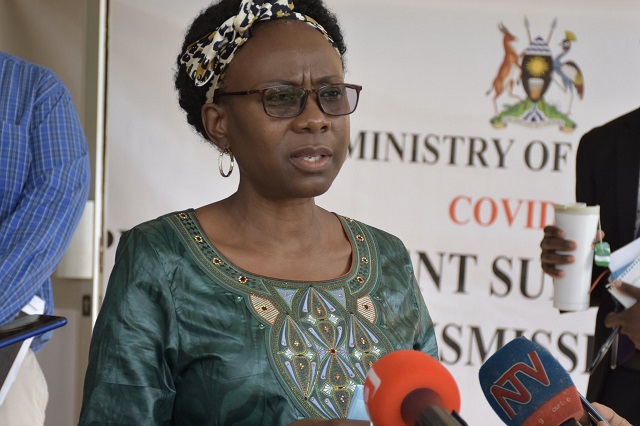
Kampala, Uganda | THE INDEPENDENT | Uganda needs 8,000 cylinders of oxygen daily to supplement what is provided at regional referral hospitals, according to the Minister of Health Dr. Jane Ruth Aceng.
According to Dr. Aceng, the country is facing a very big oxygen deficit which can only be solved by using oxygen in cylinders. However, due to a lack of cylinders, the country is stuck. She says Uganda needs to have 8,000 five litre cylinders of oxygen to be able to supplement what is being produced at oxygen plants in hospitals.
The revelation was made by Dr. Aceng during a World Health Organization press conference. She says while neighbouring countries like Kenya are willing to give Uganda oxygen and also the private sector in the country can provide more, all these offers will not help the current oxygen deficit due to a lack of oxygen cylinders.
Due to a lack of cylinders, Dr. Aceng says Uganda cannot get oxygen from neighbouring Kenya. She says even private companies in the country cannot provide the required amounts because they do not have where to put the oxygen.
According to the health ministry, 9 percent of all detected COVID-19 infections need to put on oxygen. While Dr. Aceng did not reveal how many oxygen cylinders the country needs, she revealed that most regional referral hospitals only have 10-14 cylinders. This she said this is not enough to handle the current demand.
At the moment, regional referral hospitals are facing oxygen deficits. Even the biggest hospital in the country, Mulago National Referral Hospital cannot provide enough oxygen. As a result, many patients in hospitals are being weaned off oxygen to give it to patients that are in more critical conditions.
If the country was able to get the 8,000 cylinders, Dr. Aceng says the number of deaths in the country would be reduced. However, according to intensive care staff, more piped oxygen is needed instead of cylinders as patients are not responding to nosal oxygen that is found in cylinders.
*****
URN
 The Independent Uganda: You get the Truth we Pay the Price
The Independent Uganda: You get the Truth we Pay the Price


